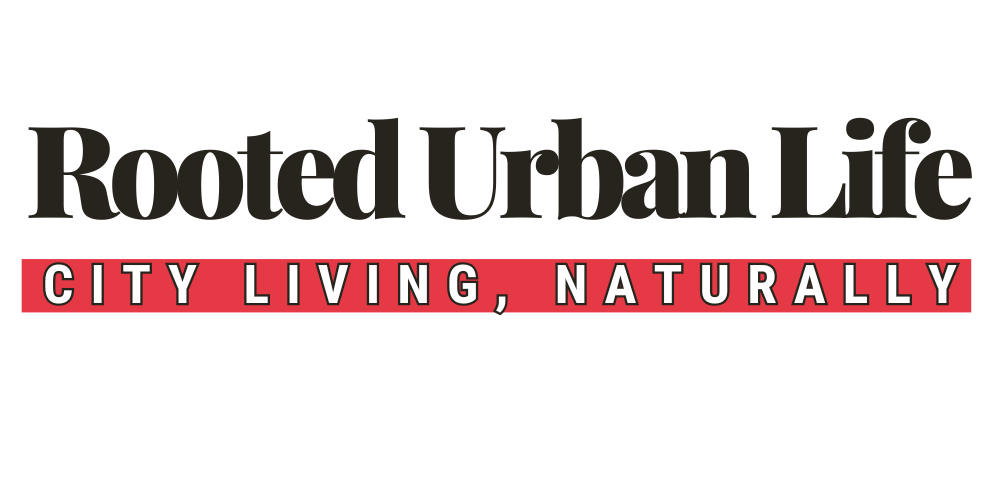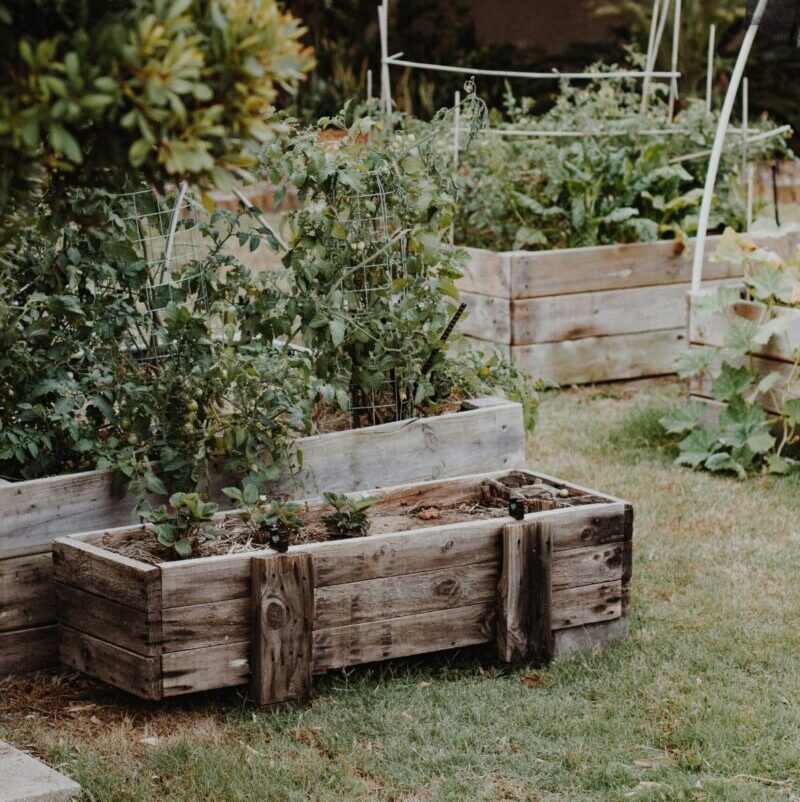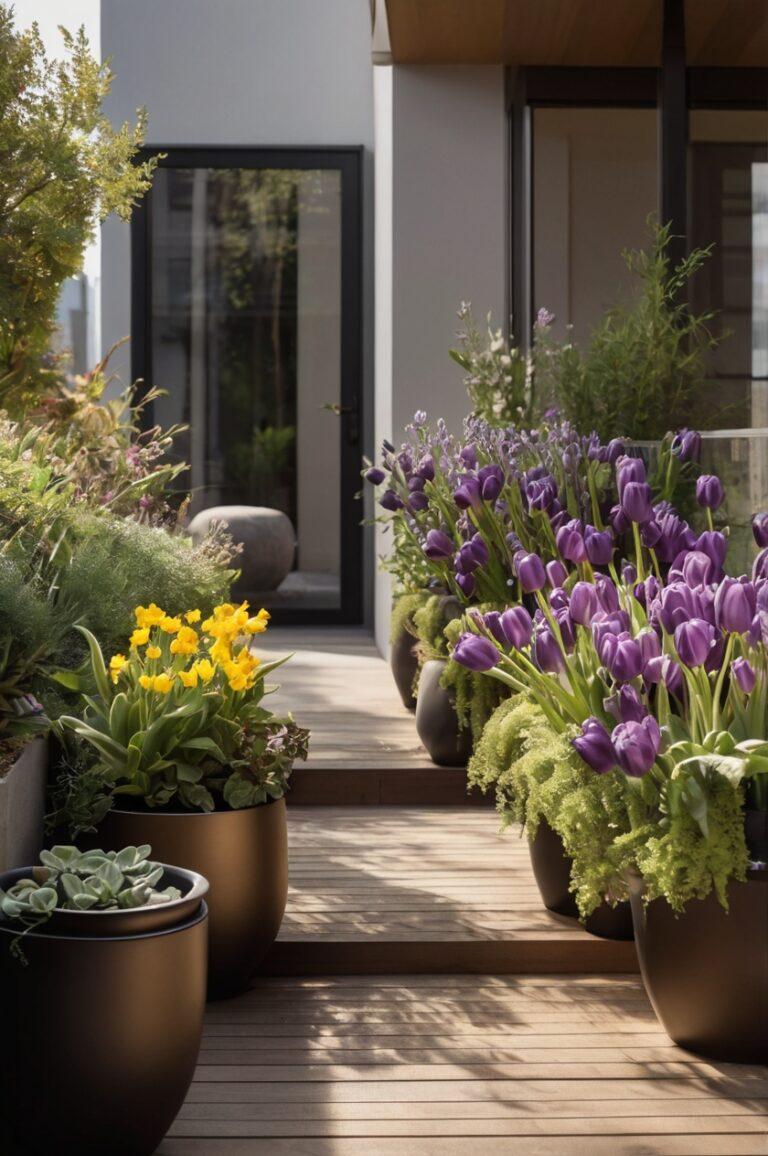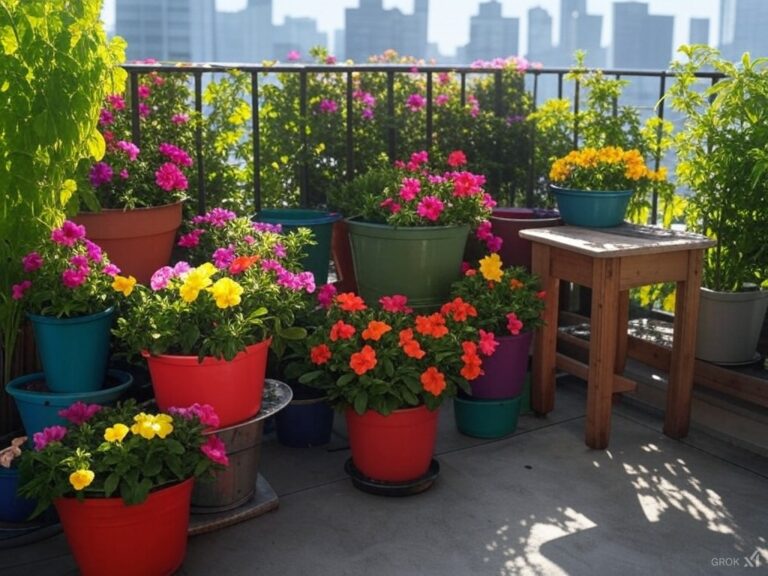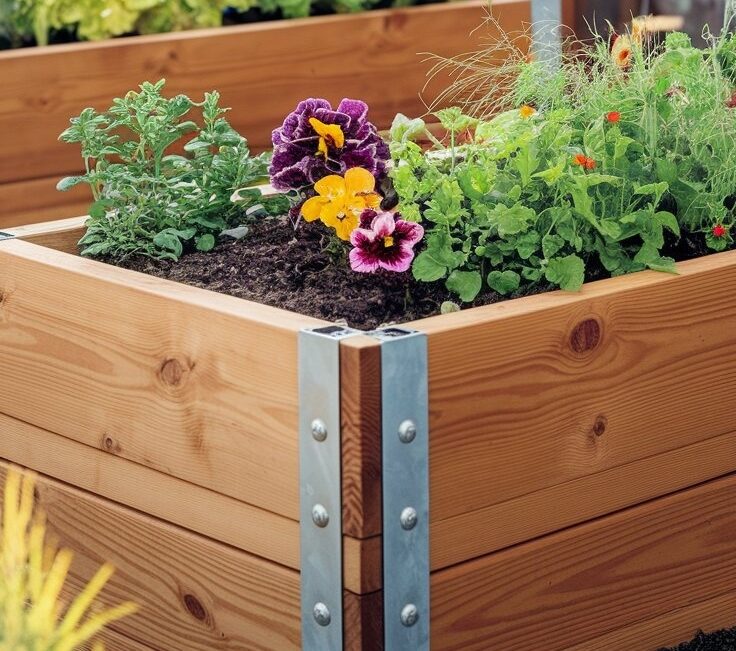Transform Your Garden with Raised Beds: Grow More, Work Less
Unlock the Secret to Effortless Gardening: Discover How Raised Beds Can Revolutionize Your Garden
The Problem:
Gardening is often seen as a labor-intensive activity, fraught with challenges like poor soil quality, back strain, and inefficient use of space. Traditional methods require extensive digging, dealing with weeds, and constant battle against poor drainage or soil contamination.
What You Will Learn:
Raised bed gardening elevates your gardening experience – literally and figuratively. By creating an elevated plot where soil is contained within a frame, you can:
- Enhance Soil Drainage and Aeration: This leads to healthier plant roots and less disease.
- Customize Soil Composition: Tailor the soil exactly to the needs of your plants.
- Reduce Physical Strain: Garden from a comfortable height, saving your back and knees.
- Conserve Water: Better moisture retention means less frequent watering.
- Grow Anywhere: Even on poor soil or concrete surfaces, without digging.
- Educate and Engage: It’s an excellent way to teach children about gardening.
With raised beds, gardening becomes not just easier but also more productive and enjoyable.
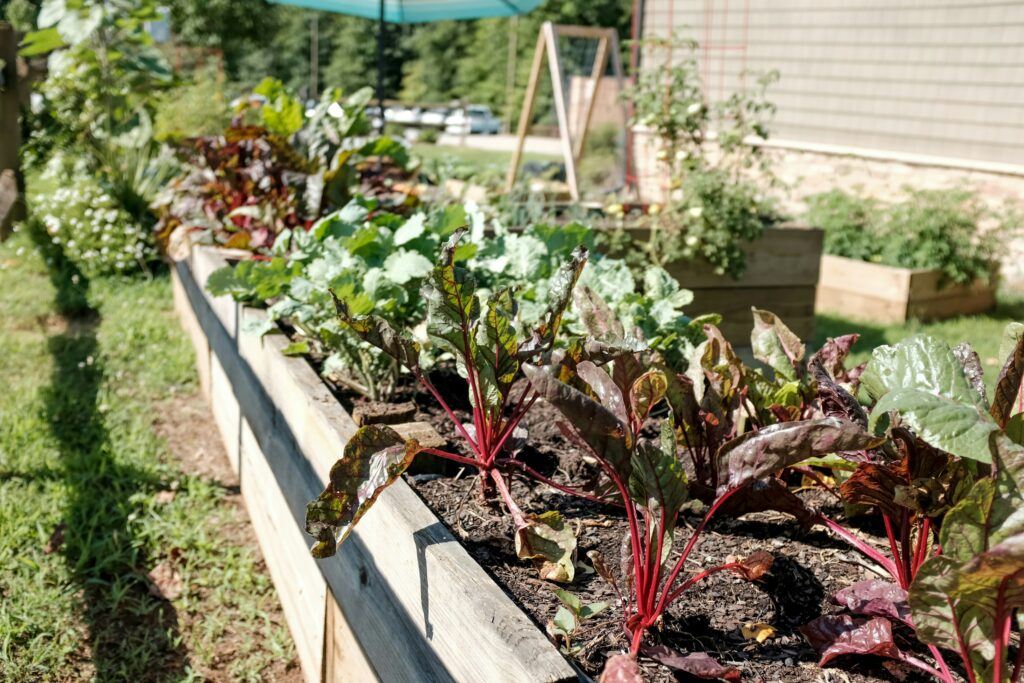
Designing Your Raised Bed Garden
Creating a raised bed garden starts with thoughtful planning. Here are key considerations to ensure your garden is both functional and beautiful:
- Space Assessment: Start by evaluating your garden space, noting sun exposure to optimize plant placement.
- Bed Height and Accessibility: Design beds at a height that minimizes bending, ensuring inclusivity for all ages and abilities.
- Aesthetic Integration: Choose shapes that complement your garden’s style – from formal rectangles to organic curves.
- Depth Considerations: Plan the depth based on the types of plants you intend to grow; deeper for root vegetables, shallower for herbs.
By considering these elements, your raised bed garden will not only be productive but will also become a visual highlight in your garden, tailored to your needs and aesthetic preferences.
Choosing Materials for Longevity and Safety
The materials you select for your raised beds will affect their durability, the health of your plants, and even the look of your garden. Here’s a look at popular options:
- Wood: Cedar or redwood for natural durability and curb appeal. Mske sure the wood is not chemically treated.
- Stone/Bricks: For heat retention and a classic look. They can potentially extend the growing season but usually are more labor-intensive to construct.
- Composites: Eco-friendly and long-lasting. They are also lightweight, easy to work with and can last for many years, though they may come with a higher up front cost.
- Garden Bed Kits: For ease of setup and versatility.
Choosing the right material is crucial for the long-term success of your garden. Consider your environment, budget, and aesthetic goals when making your decision.
Tools and Preparation
Before you start building, gather the right tools and prepare your site. Here’s what you’ll need:
- Tools Needed: Shovel, level, saw, drill, gloves, tape measure.
- Preparation: Clear the area, level the ground, and prepare the soil.
Proper preparation and the right tools can make the construction process smooth and ensure your garden starts on the right foot.
Step-by-Step Instructions for Constructing a Raised Bed Garden
Building a raised bed garden is straightforward if you have a plan.
Constructing your raised bed is straightforward with the right approach. Here’s how to build one:
- Lay Out the Perimeter: Mark your garden bed’s shape with your chosen materials.
- Secure Corners: Ensure stability with corner supports.
- Assemble Sides: Connect the materials, keeping everything level.
- Add Weed Barrier: Prevent unwanted growth from below.
- Fill with Soil: Use a well-balanced mix for optimal plant health.
- Settle Soil: Water to settle the soil and check for evenness.
With these steps, you’ll have a sturdy and well-prepared raised bed ready for planting.
With your bed prepped, you’re ready to plant.
Filling Your Raised Bed: Soil and Beyond
After the structure of your raised bed is in place, the next crucial step is filling it. This isn’t just about adding soil; it’s about creating an environment where plants can thrive. Here’s how to do it:
Basic Soil Preparation:
- Weed Barrier: Lay down a layer of cardboard or landscape fabric to stifle weed growth from below.
- Soil Mix: Use a blend of quality topsoil, compost, and amendments like peat or coconut coir for moisture retention.
Innovative Filling Techniques:
- Hugelkultur Approach: This German method involves using layers of organic materials:
- Base Layer: Start with large woody debris like logs or branches. As they decompose, they’ll provide nutrients and help retain moisture.
- Middle Layers: Add smaller twigs, leaves, and grass clippings. These layers will decompose faster, adding to the nutrient profile.
- Top Layer: Finish with a mix of soil and compost. This top layer is where you’ll plant, benefiting from the moisture and nutrients released from below.
- Core Method: Similar to Hugelkultur but simpler:
- Dig a Trench: In the center of your bed, dig a small trench.
- Fill with Organic Material: Place organic matter like cardboard, leaves, or grass clippings in the trench.
- Cover with Soil: Top with your soil mix, creating a ‘core’ that slowly releases moisture and nutrients.
By employing these filling methods, you’re not just planting in soil; you’re creating a dynamic ecosystem beneath the surface that supports plant health, reduces watering needs, and enriches the soil over time.
Advanced Tips for Raised Bed Gardening
To elevate your gardening game, consider these advanced strategies:
- Crop Rotation: Change the type of crops you plant in each bed every season. This practice helps prevent soil depletion and reduces the risk of pests and diseases.
- Companion Planting: Plant certain crops together to enhance growth and protect against pests. For example, planting marigolds with tomatoes can deter nematodes and aphids.
- Vertical Gardening: Utilize vertical space by growing climbing plants like beans, cucumbers, and peas. Install trellises or stakes to support these plants, increasing your garden’s productivity.
- Mulching: Apply a layer of mulch on top of the soil to retain moisture, suppress weeds, and regulate soil temperature. Organic mulches like straw, wood chips, or shredded leaves also add nutrients to the soil as they decompose.
- Season Extension: Use row covers, cloches, or cold frames to extend your growing season. These protective structures can shield plants from frost and provide a warmer microclimate for early or late-season gardening.
Implementing these techniques can lead to a more sustainable, productive, and beautiful garden.
Troubleshooting and Maintenance Tips
Even with meticulous planning, gardening comes with its set of challenges. Here’s how to keep your raised bed garden thriving:
Watering:
- Monitor: Check soil moisture regularly; water when the top inch is dry.
- Consistency: Establish a routine, adjusting based on weather and plant needs.
Soil Health:
- Testing: Annually test soil for pH and nutrients to adjust as necessary.
- Amendments: Add compost or organic matter to enrich the soil.
Pest Management:
- Identify: Recognize the pests affecting your garden. Look for signs like chewed leaves or holes in fruits.
- Physical Barriers:
- Hardware Cloth: Use at the base of beds to deter burrowing pests.
- Row Covers: Protect plants from flying insects while allowing light and water through.
- Cultural Practices:
- Crop Rotation: Change crop locations yearly to disrupt pest cycles.
- Companion Planting: Use plants that naturally repel pests or attract beneficial insects.
- Natural Predators:
- Encourage Beneficial Insects: Plant flowers that attract ladybugs, lacewings, etc.
- Attract Wildlife: Bird feeders or small ponds can bring in birds and frogs that eat pests.
- Organic Controls:
- Hand Picking: Remove pests by hand where practical.
- Organic Sprays: Use insecticidal soaps or neem oil as a last resort.
Disease Management:
- Plant Health: Healthy plants are less susceptible; ensure good watering, nutrition, and air circulation.
- Sanitation: Remove diseased plant parts promptly to prevent spread.
Regular maintenance and proactive approaches to common gardening issues will ensure your raised bed garden remains productive and beautiful. Remember, the key to managing pests and diseases lies in observation, prevention, and natural solutions whenever possible.
FAQ
Q: How deep should my raised bed be? A: At least 6-8 inches for shallow-rooted plants, 12+ inches for deeper roots.
Q: Can I use any type of wood for my raised beds? A: Avoid chemically treated wood; opt for naturally resistant woods like cedar.
Q: What should I do if I encounter pests in my garden? A: Identify the pest first, then implement natural control methods like barriers or predators.
Q: How often should I water my raised bed garden? A: Check when the top inch of soil is dry, but frequency can vary with weather and plant needs.
Q: Can raised beds be placed on concrete? A: Yes, ensure good drainage by elevating or adding drainage holes.
Raised bed gardening is a fantastic way to enhance your outdoor space, providing numerous benefits for you and your plants. By following these tips and techniques, you can create a productive, beautiful, and easy-to-maintain garden.
Whether you’re a seasoned gardener or just starting, raised beds offer a versatile and rewarding gardening experience.Don’t forget to join our newsletter for more homesteading tips and tricks and share you questions and comments with us below. We’d love to hear from you.
Other Posts You May Enjoy
- Discover 13 Perfect Tomato Varieties That Thrive in Pots
- Creative Balcony Herb Garden Solutions for Small Spaces
- Transform Your Meals with Nutrient-Packed Microgreens – Ready in Just 1 Week!
- Companion Planting Tips for Vegetable Gardens
- The Benefits Of Native Plants In Urban Gardens
- 23 Plants That Will Transform Your Balcony Into a Pollinator Paradise

